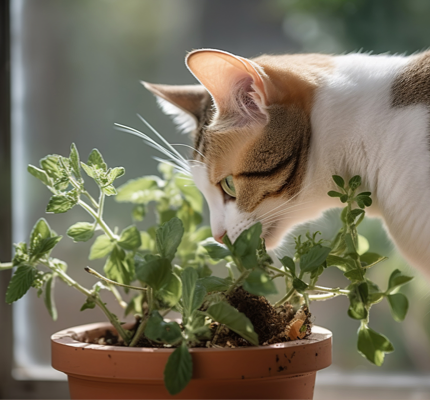As the snow has fallen, it is time to move the gardening inside for the winter. I think it is fair to say that I have not been blessed with the “green thumb” that so many people have. I think I am often guilty of giving my plants too much love and accidentally drowning them…literally…with over care. As I have gotten older, I have begun to find small successes with house plants which feels like a huge win for me. But, as I grow (pun intended) in my confidence to keep plants alive in my home, I am aware that I am introducing potential threats to my furry family. Knowing there is a risk for my cat to sniff, rub, chew, and potentially eat any plants that I bring home, I want to make sure that my new hobby is safe for my pets. So, I did a little research and thought you might also appreciate reading what plants are deemed to be “cat friendly”. Below is a list of cat-friendly plants and the website source if you want to do further information before testing your own green thumb.
African Violets (Saintpaulia): African violets are one of the most popular flowering safe houseplants for pets. They are also in demand because they bloom in low light and thrive in environmental conditions that people like: moderate temperatures and average humidity.
Chinese Money Plant (Pilea Peperomioides): This easy-keeper is part of the nettle family (Urticaceae) but is a safe choice for homes with cats or dogs. Its trademark is its round, fleshy leaves in vibrant green
Banana Tree (Musa spp.): The large pet-friendly banana tree serves as a dramatic accent plant and grows to a height of six feet or more, though dwarf varieties top out between two and four feet. A central stem splits into long, wide leaves that are sometimes used in tropical cuisine to steam or serve food. Safe enough for serving human food, it’s not a huge surprise to find this plant listed as non-toxic by the ASPCA, making it a safe houseplant for cats and dogs.
Echeveria (Echeveria spp.): This type of succulent is a safe choice if you share your home with dogs or cats because it’s non-toxic. The echeveria plant grows plump rosettes, ranging in color from greenish-silver to blue-green or even lilac-hued.
Spider Plant (Chlorophytum): The cascading nature of the spider plant’s foliage means it’s a natural fit for elevated spaces like floating shelves, hanging baskets, or a windowsill (as long as it doesn’t receive too much light). Also known as ribbon plant or airplane plant, it’s non-toxic to cats and dogs and has a reputation as a hardy houseplant.
Areca Palm (Dypsis lutescens): Also known as the butterfly palm, Dypsis lutescens makes any interior feel like a trip to the tropics. Sometimes palm fronds can trigger a cat’s playful swatting and biting instincts, so it’s comforting to know that the areca palm isn’t toxic for cats or dogs.
Boston Fern (Nephrolepis): Boston ferns (Nephrolepis) are an enduring houseplant favorite, but their shaggy fronds might tempt cats and dogs to chew on them. Sometimes known as a sword fern, it has foliage that shoots straight up from the center of the plant, then arches as the frond grows longer. The foliage is non-toxic to cats and dogs, so it’s fine to brighten up your guest room or bathroom with these lush plants.
Prayer Plant (Maranta leuconeura): The prayer plant has a unique habit: it folds its leaves each evening, giving the impression of hands folded in prayer. It’s non-toxic for pets and makes a popular houseplant choice, given its tropical foliage. It adapts well to a range of light conditions, though it prefers bright, indirect light. It will grow in moderate-to-low light conditions, too.
Orchid (Orchidaceae): If you have a passion for orchids (Orchidaceae), you can safely add them to your go-to list of pet-safe plants. Many orchids bloom for weeks in the winter when days are short and thrive in partial light and root-bound conditions.
Bromeliad (Bromeliaceae): The tough, strappy leaves of the bromeliad and the curious cone-shaped blooms make bromeliad plants (Bromeliaceae family) favorites as houseplants. These pet-safe plants are easy to maintain, needing only a bright window and a humid environment.
There are, of course, many more plants out there (and listed on the website linked below) and I encourage you to check the plants you may already have to be sure that they are okay for your cat to share your home with.
Source: 23 Indoor Plants Safe for Cats and Dogs (thespruce.com)
Last modified: November 5, 2023



